Province guides

Attractions
New South Wales is best known for Sydney, a city that draws visitors from around the world with its iconic skyline and lively urban energy. The Harbour Bridge, Sydney Opera House and Sydney Tower are its headline landmarks, but the city's appeal extends far beyond architecture. Sydney is also cherished for its sweeping beaches, easy-going nightlife and a restaurant scene that reflects the city's rich cultural mix. Yet while Sydney is Australia's premier tourist destination, travellers who range beyond the city limits will discover that New South Wales has far more than one dazzling metropolis.
Across the state, varied landscapes create an outdoor playground for adventurers. Mountain ranges, surf beaches, coastal marine parks and vast inland plains make it possible to hike, surf, snorkel, dive, kayak and even ski within a single state. Popular destinations for lovers of nature and the outdoors include the Blue Mountains, the Snowy Mountains, Lord Howe Island, the Hunter Valley and the rugged forests of Barrington Tops National Park. Coastal towns such as Byron Bay, Coffs Harbour, Port Macquarie and Jervis Bay offer excellent beaches and a laid-back holiday atmosphere, while Newcastle, Jindabyne and the Hawkesbury Valley provide their own mix of scenery, culture and outdoor pursuits. Together they reveal the diversity and beauty that make New South Wales such a rewarding place to explore.
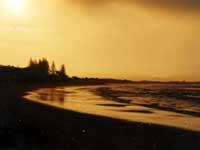
Byron Bay
Set near Cape Byron on the far north coast of New South Wales, Byron Bay is one of Australia's most iconic beach destinations, whose long, golden beaches, world-class surf and sun-…
Byron Bay
Set near Cape Byron on the far north coast of New South Wales, Byron Bay is one of Australia's most iconic beach destinations, whose long, golden beaches, world-class surf and sun-drenched, easy-going lifestyle draw visitors year-round. The Cape Byron Track delivers sweeping ocean views and some of the country's best land-based whale watching from winter into spring. Byron also offers plenty of adventure, from sea kayaking with dolphins to skydiving over the coastline, while nearby rainforest reserves add a lush, natural backdrop. A lively cultural scene, anchored by Bluesfest and the Byron Writers Festival, completes its broad appeal.
Website www.byron-bay.com
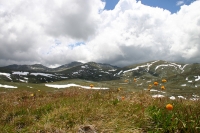
Snowy Mountains
The Snowy Mountains lie roughly 185 to 310 miles (300 to 500km) south of Sydney depending on the resort, and form Australia's premier winter playground. Ski season runs from June t…
Snowy Mountains
The Snowy Mountains lie roughly 185 to 310 miles (300 to 500km) south of Sydney depending on the resort, and form Australia's premier winter playground. Ski season runs from June to early October, with Perisher and Thredbo offering the country's best alpine facilities. Perisher is the largest resort, bringing together several linked ski areas, while Thredbo is known for its village atmosphere and Australia's longest continuous run, stretching about 3.7 miles (5.9km). The region is celebrated for its alpine scenery, welcoming lodges and a modest but lively après-ski scene.
In summer the Snowy Mountains transform into a high-country adventure destination, promising hiking, mountain biking, horse riding and fishing, as well as the chance to climb Australia's highest peak, Mount Kosciuszko.
Website www.visitnsw.com/destinations/snowy-mountains
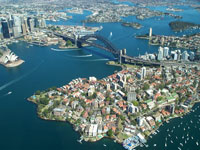
Harbour Bridge
One of Sydney's most recognisable landmarks and a major engineering achievement of its time, the Sydney Harbour Bridge, known locally as the 'Coathanger', was completed in 1932 aft…
Harbour Bridge
One of Sydney's most recognisable landmarks and a major engineering achievement of its time, the Sydney Harbour Bridge, known locally as the 'Coathanger', was completed in 1932 after years of complex construction. Its vast steel arch spans about 1,650 feet (503m) across the harbour, carrying eight lanes of road traffic, two railway tracks and pedestrian walkways between the northern and southern shores. Visitors can join an organised BridgeClimb for sweeping views and an unforgettable sense of achievement. For a less demanding alternative, around 200 steps lead to the Pylon Lookout, an elevated platform about 285 feet (87m) above the water, with exhibits along the way that explore the bridge's history and construction.
Website www.bridgeclimb.com
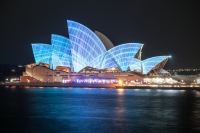
Sydney Opera House
The Sydney Opera House, perched on Bennelong Point, is one of Australia's most iconic architectural statements. Completed in 1973 and designed by Danish architect Jørn Utzon, it r…
Sydney Opera House
The Sydney Opera House, perched on Bennelong Point, is one of Australia's most iconic architectural statements. Completed in 1973 and designed by Danish architect Jørn Utzon, it remains a fully operational performing-arts centre rather than a museum piece. The building houses six major venues, including a Concert Hall seating around 2,679 people, and the 1,507-seat Joan Sutherland Theatre. Originally budgeted far lower and plagued with delays and controversy, the final cost climbed to about AUD102 million. Guided tours and frequent free forecourt events invite visitors to appreciate both its dramatic shell-like roof and its richly layered cultural life.
Website www.sydneyoperahouse.com
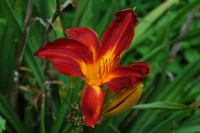
Royal Botanic Gardens
Sydney's Royal Botanic Garden is one of the city's great pleasures, a broad sweep of greenery beside the harbour with towering figs, colourful plant collections and superb views. E…
Royal Botanic Gardens
Sydney's Royal Botanic Garden is one of the city's great pleasures, a broad sweep of greenery beside the harbour with towering figs, colourful plant collections and superb views. Established in 1816 on the site of the colony's first European farm, it offers a peaceful contrast to the busy city. Visitors can stroll through fern gullies, the Palm Grove and the Pioneer Garden, home to a young Wollemi Pine, one of the world's rarest trees. The waterfront path to Mrs Macquarie's Chair is especially beautiful in the late afternoon. The Calyx hosts changing exhibitions, and Government House opens for tours on selected days.
Website www.botanicgardens.org.au/royal-botanic-garden-sydney
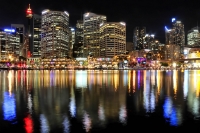
Darling Harbour
Darling Harbour is one of Sydney's most popular waterfront precincts, a lively area of attractions, dining and public spaces just west of the central business district. Highlights …
Darling Harbour
Darling Harbour is one of Sydney's most popular waterfront precincts, a lively area of attractions, dining and public spaces just west of the central business district. Highlights include SEA LIFE Sydney Aquarium, WILD LIFE Sydney Zoo, the Australian National Maritime Museum and the beautifully landscaped Chinese Garden of Friendship, a serene refuge of ponds, pavilions and winding paths created in partnership with the city of Guangzhou. The precinct also offers family-friendly playgrounds, harbourside restaurants and regular events.
The new IMAX Theatre has reopened with modern facilities, and nearby Pyrmont is home to The Star, Sydney's major casino and entertainment complex. Ferries from Darling Harbour connect easily to Circular Quay, Barangaroo and other parts of the city, making it a convenient area to explore on foot or by water.
Website www.darlingharbour.com
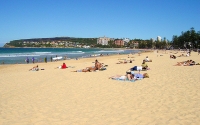
Sydney Beaches
Sydney is famous for its long string of Pacific Ocean beaches, most within easy reach of the city. From Palm Beach in the north through Avalon, Newport, Mona Vale and Freshwater to…
Sydney Beaches
Sydney is famous for its long string of Pacific Ocean beaches, most within easy reach of the city. From Palm Beach in the north through Avalon, Newport, Mona Vale and Freshwater to the lively shores of Manly, the coastline offers excellent swimming, surfing and coastal views. Manly is the best known of the northern beaches and can be reached by a scenic ferry ride from Circular Quay or by the Spit to Manly Walk, a rewarding route of bays, bushland and harbour outlooks. South of the harbour, Bondi and the clifftop walk to Bronte remain favourites for joggers, families and beach lovers year-round.
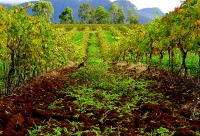
Hunter Region
The Hunter Valley sits about 75 to 95 miles (120 to 150km) north of Sydney and is one of Australia's best-known wine regions, famous for its Semillon, shiraz and long, leisurely lu…
Hunter Region
The Hunter Valley sits about 75 to 95 miles (120 to 150km) north of Sydney and is one of Australia's best-known wine regions, famous for its Semillon, shiraz and long, leisurely lunches. Beyond the vineyards, the broader Hunter Region offers striking natural attractions, including the beaches around Newcastle, the serene waters of Lake Macquarie and the wetlands and coastal forests of the Myall Lakes. To the northwest, the Barrington Tops World Heritage Area rises to 5,203 feet (1,586m) and protects some of the country's most impressive high-altitude bushland. Port Stephens, with its clear water, sand dunes and resident dolphins, is another popular base for coastal walks, whale watching and cruises.
Website www.winecountry.com.au
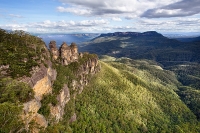
Blue Mountains
The Blue Mountains begin just beyond Glenbrook and Lapstone, around an hour to 90 minutes west of Sydney, and are easily reached by train or on an organised day tour. This vast wil…
Blue Mountains
The Blue Mountains begin just beyond Glenbrook and Lapstone, around an hour to 90 minutes west of Sydney, and are easily reached by train or on an organised day tour. This vast wilderness of sandstone cliffs, deep valleys and eucalyptus forests is one of Australia's most spectacular natural areas, offering superb walking trails and popular adventure activities such as canyoning, abseiling and caving.
Historic towns are scattered throughout the region, with Katoomba the main hub and home to the celebrated Three Sisters at Echo Point. In mid-winter many hotels and guesthouses host Yulefest, a long-running 'Christmas in July' celebration that pairs mountain hospitality with crisp, cold evenings and the rare chance of snowfall.
Website www.bluemts.com.au


